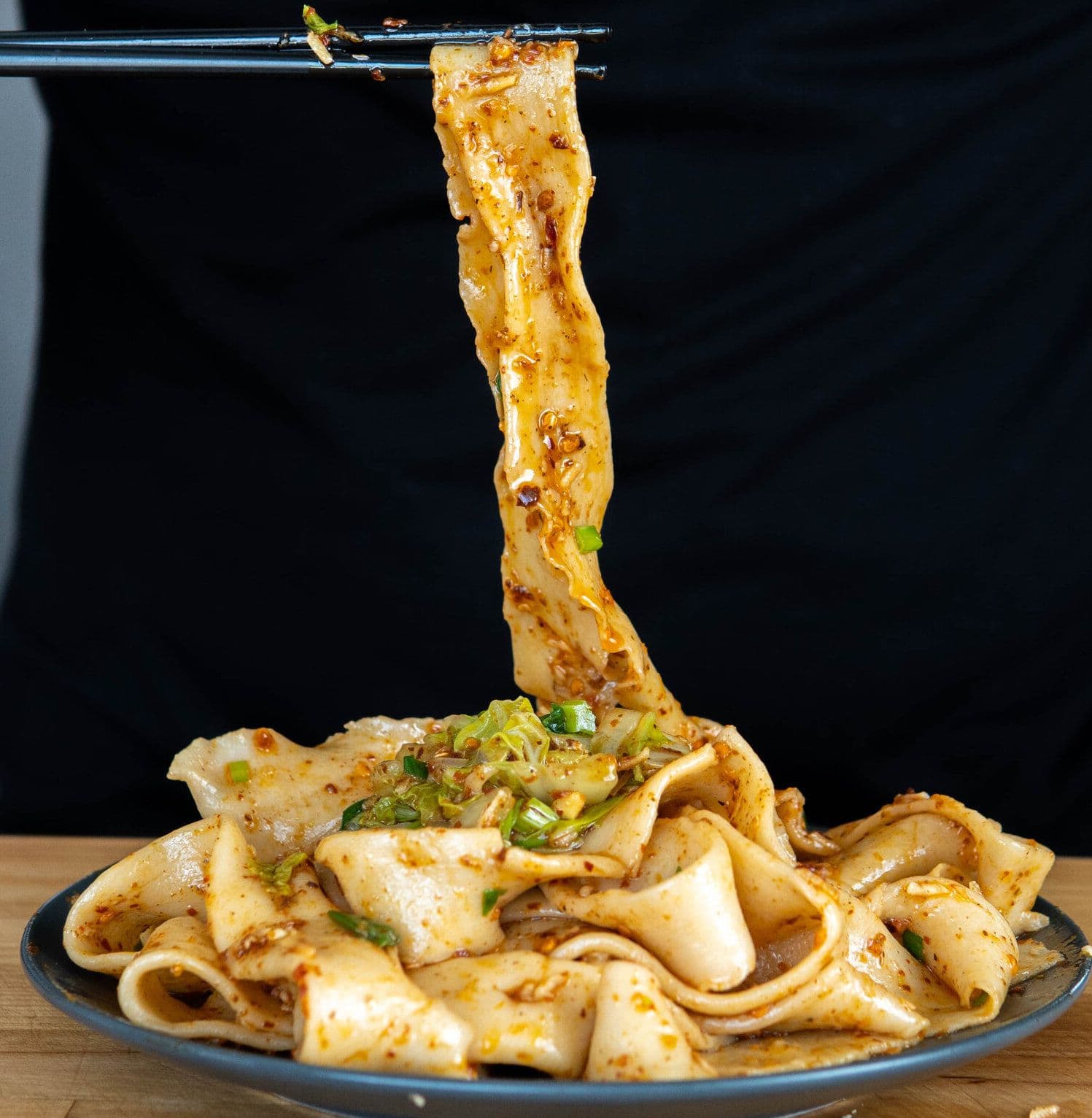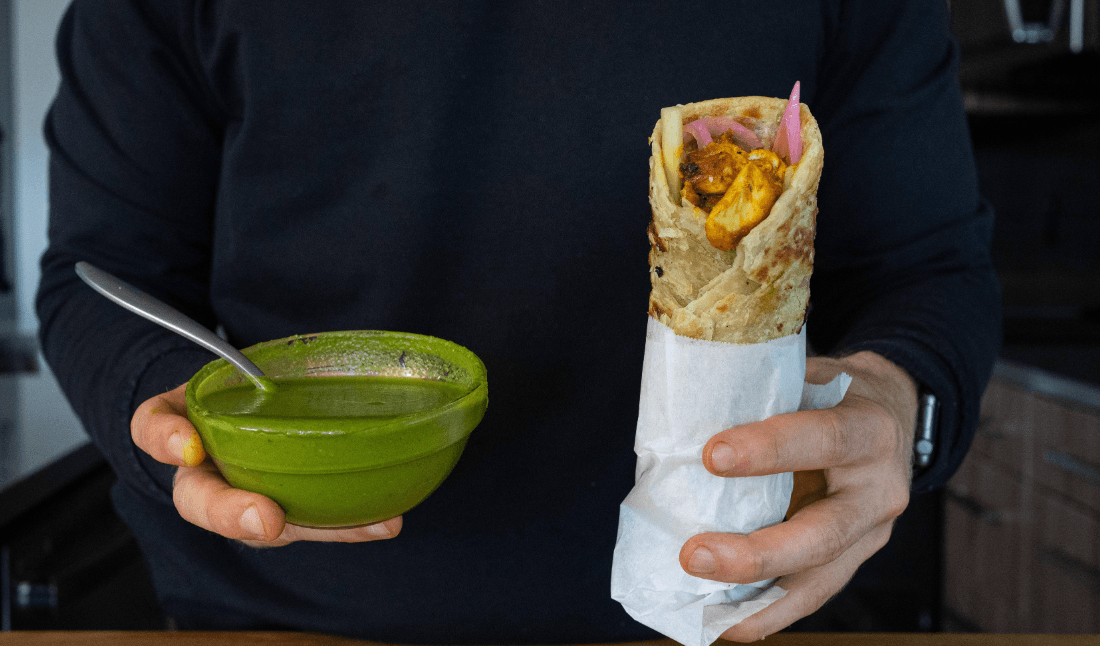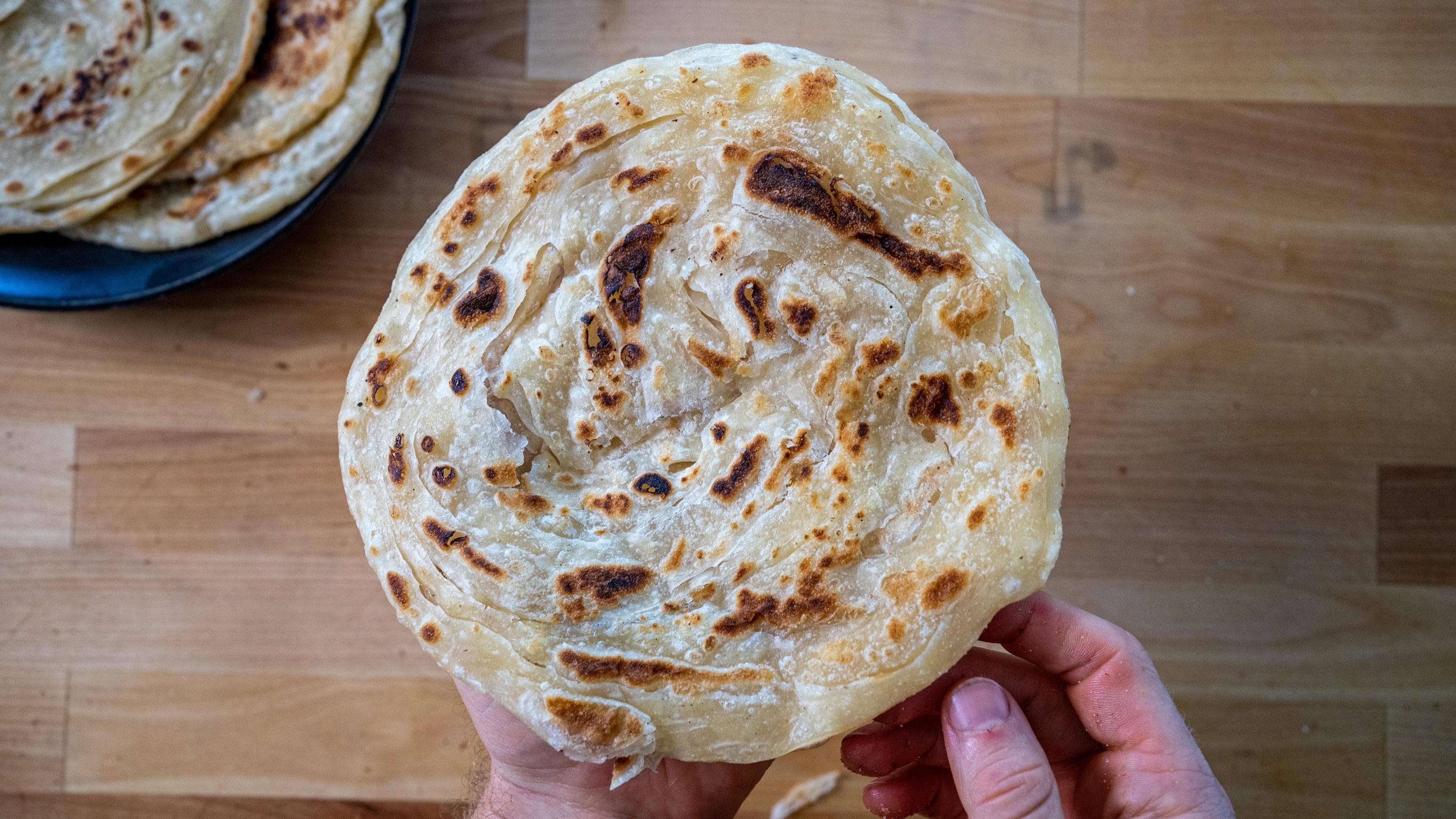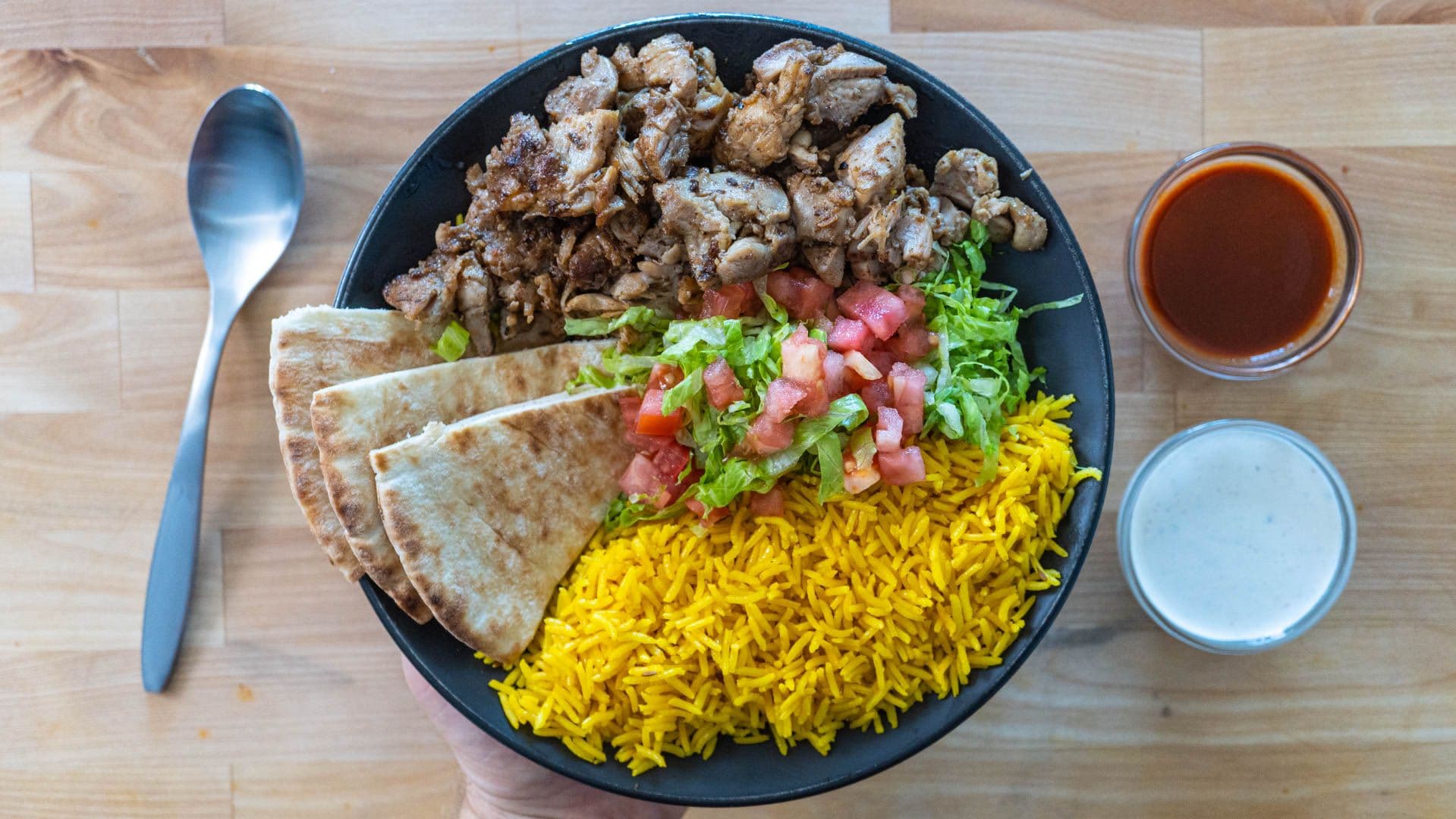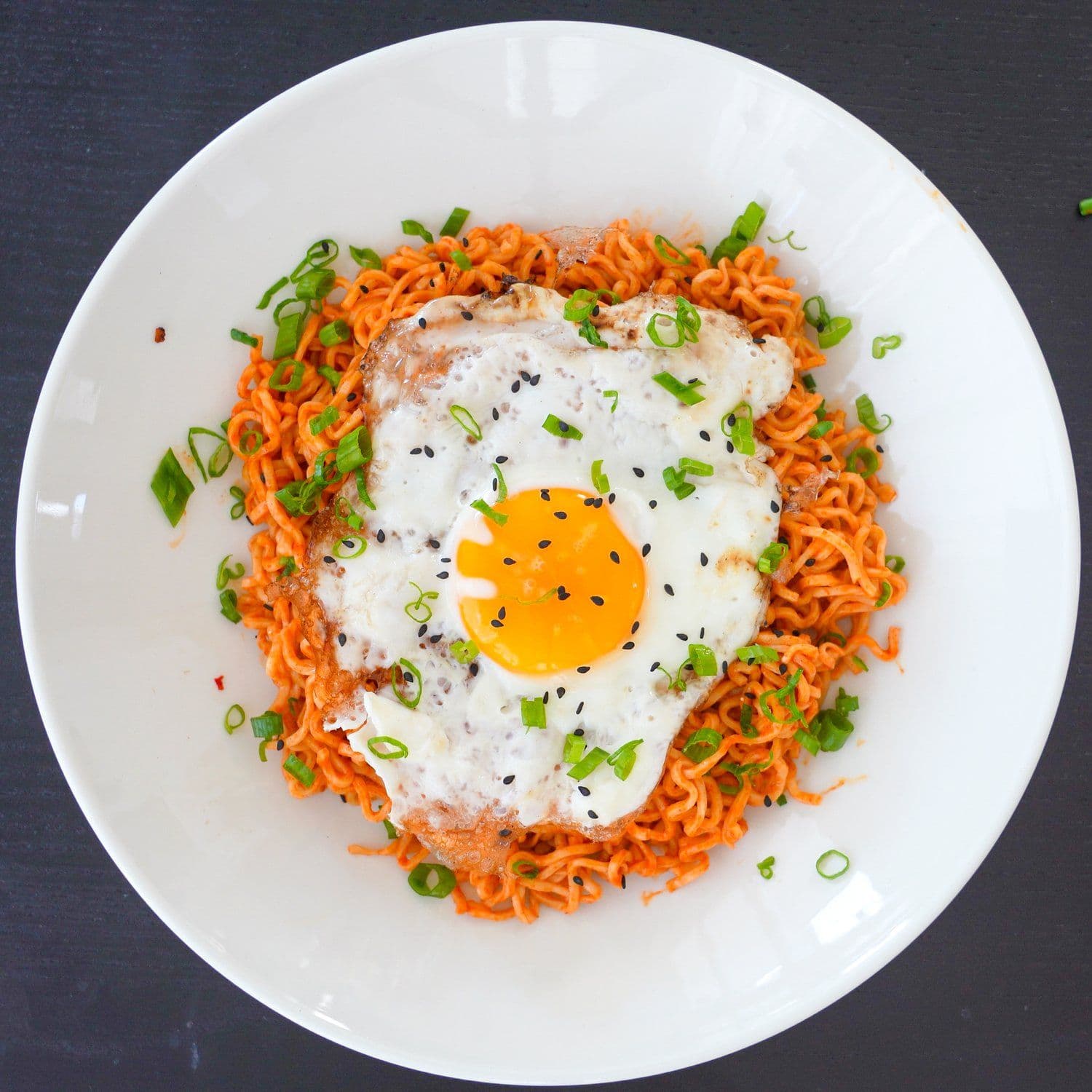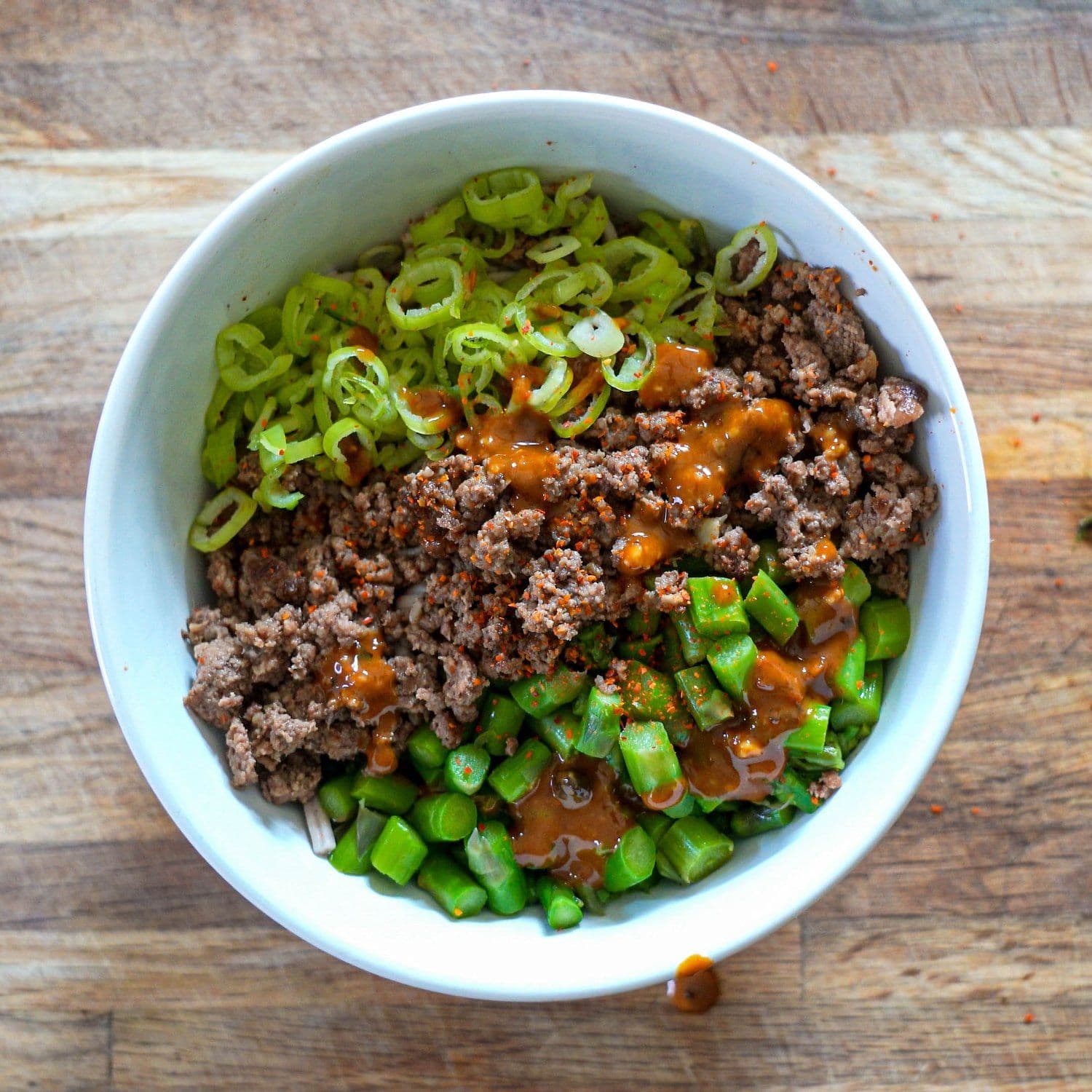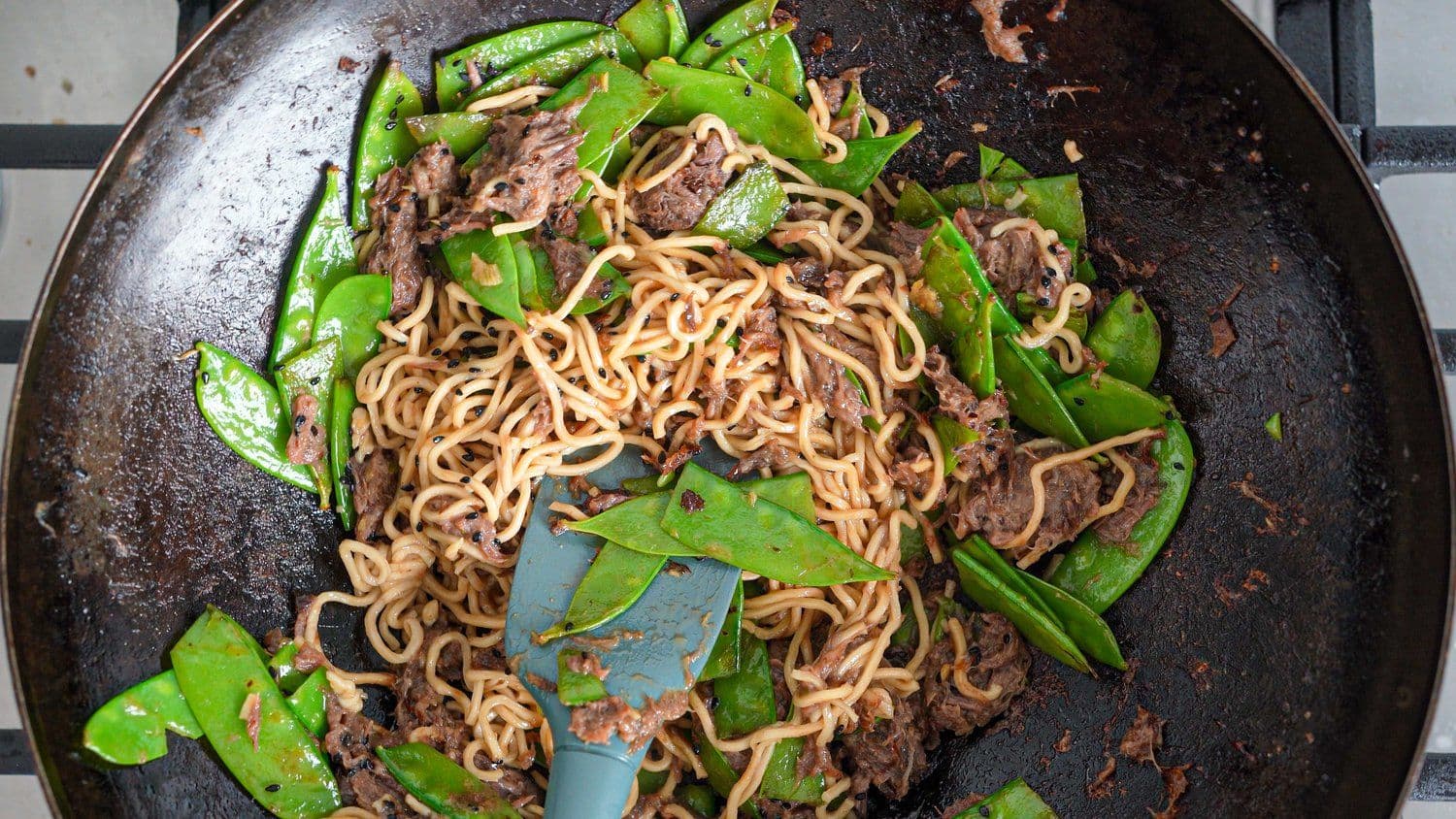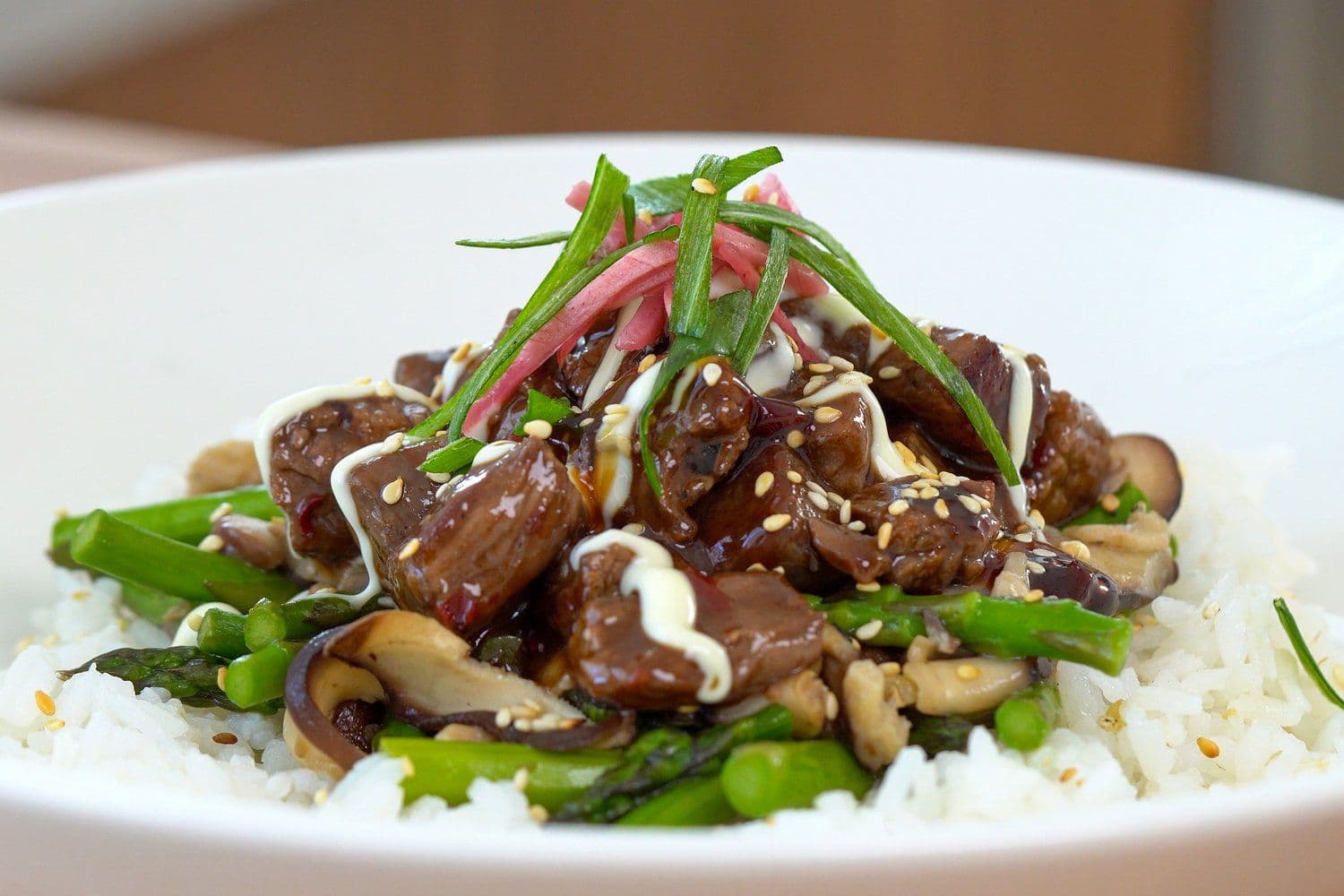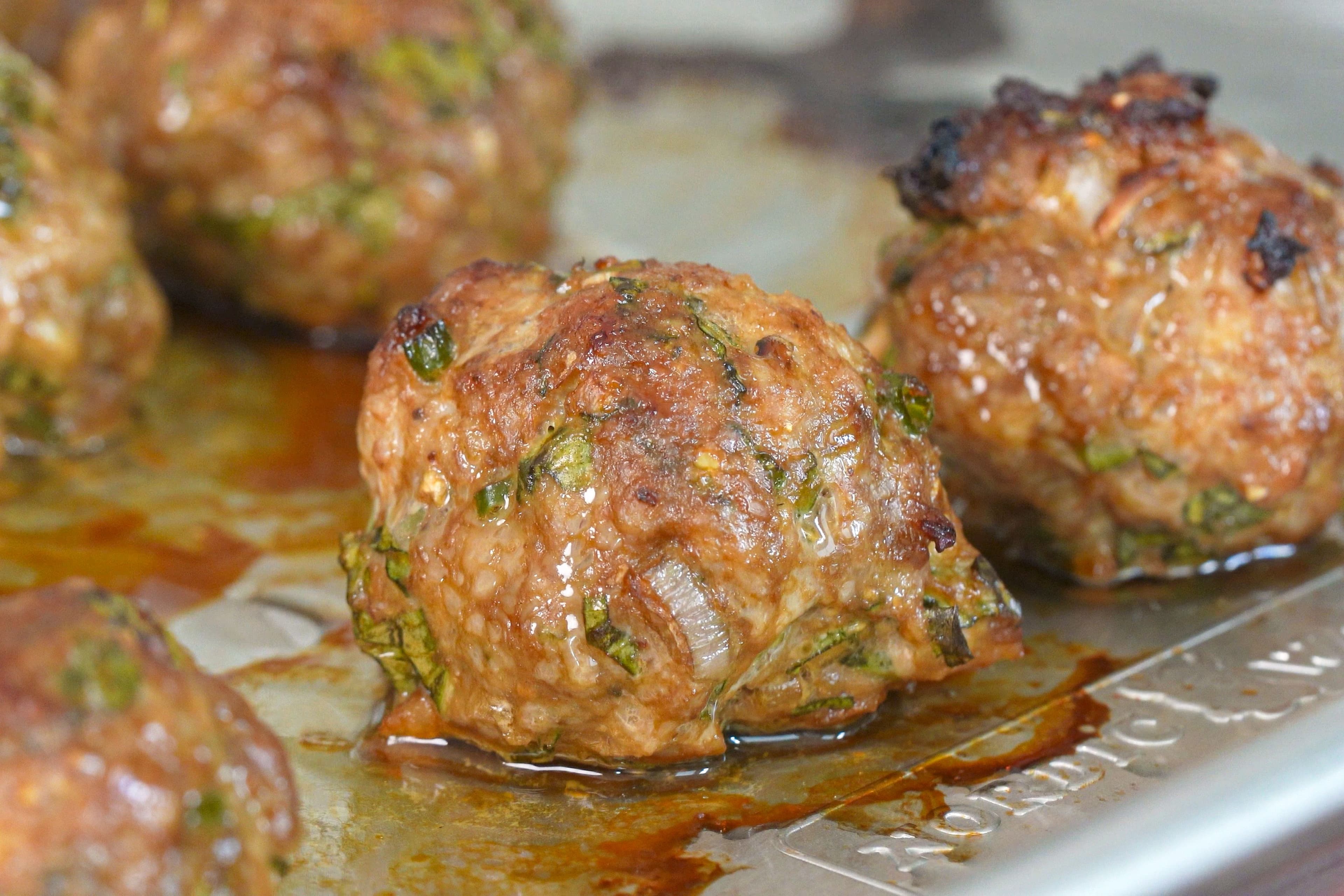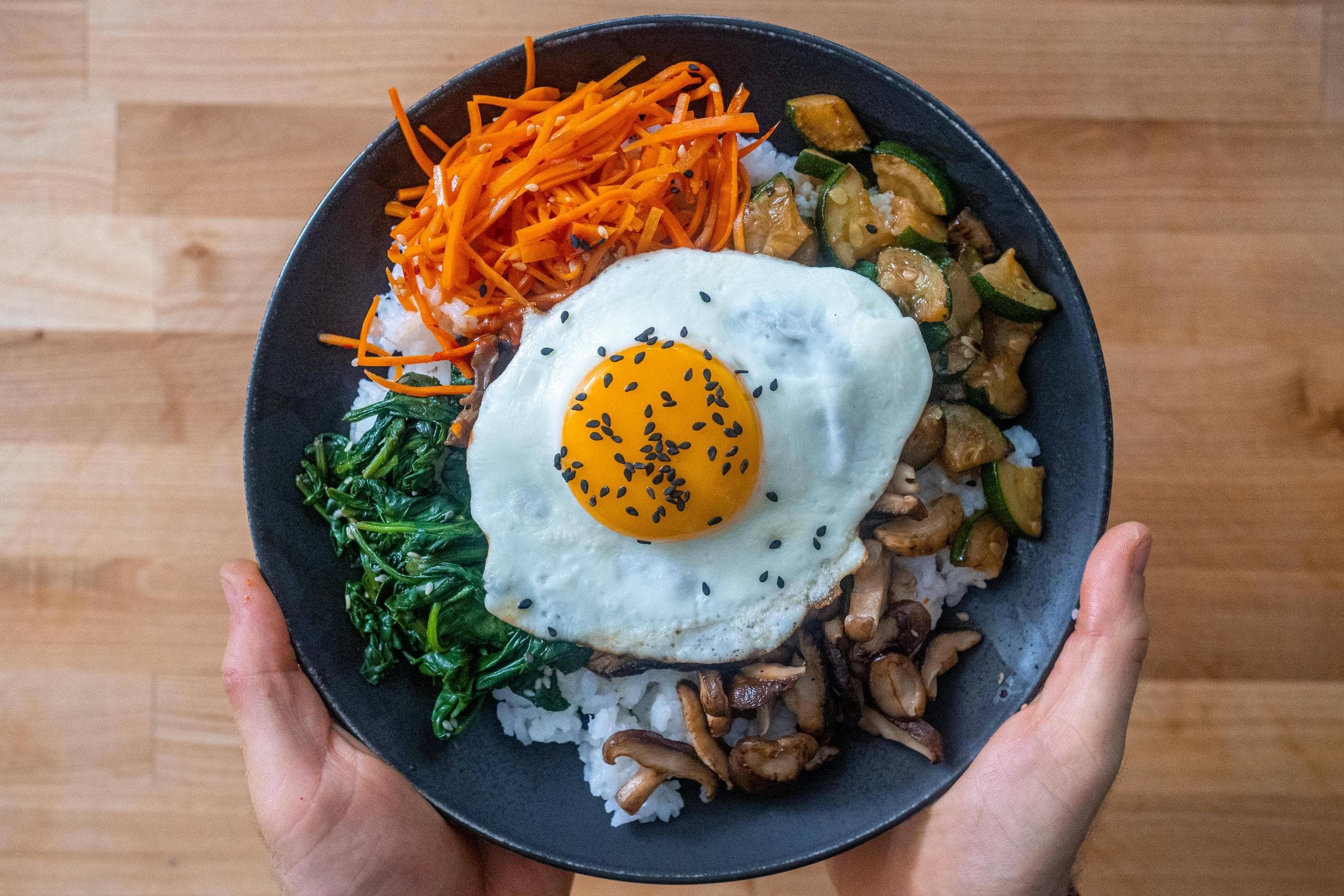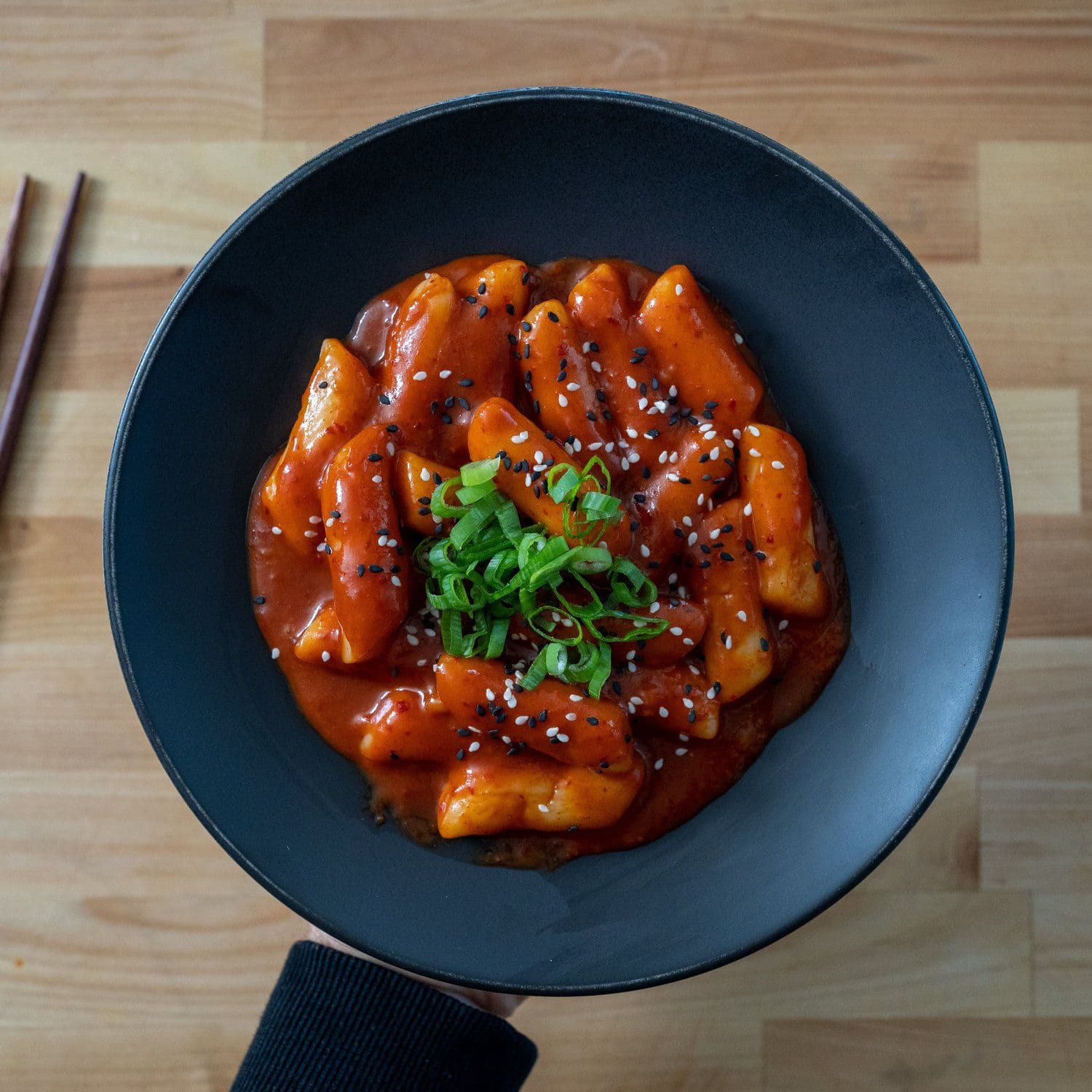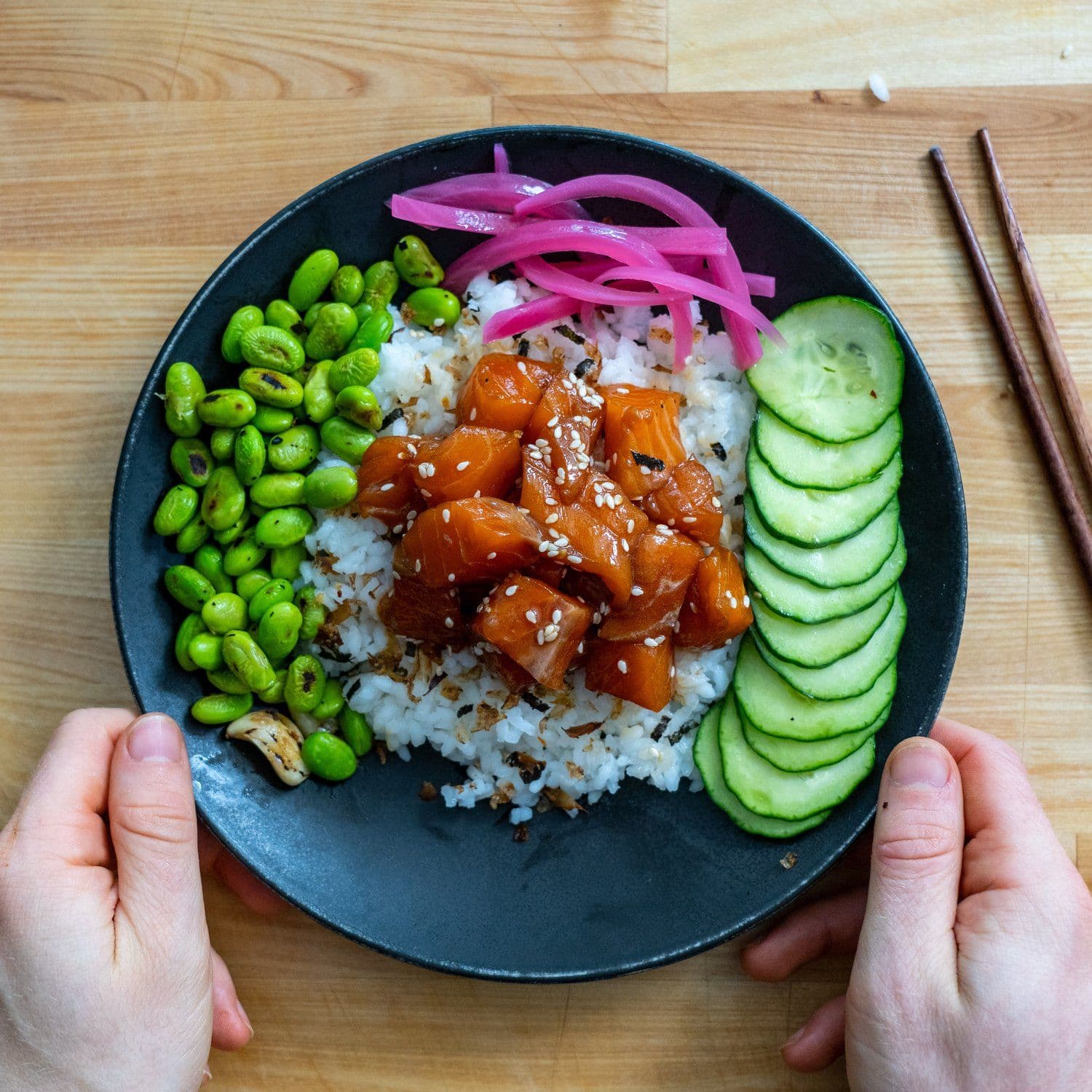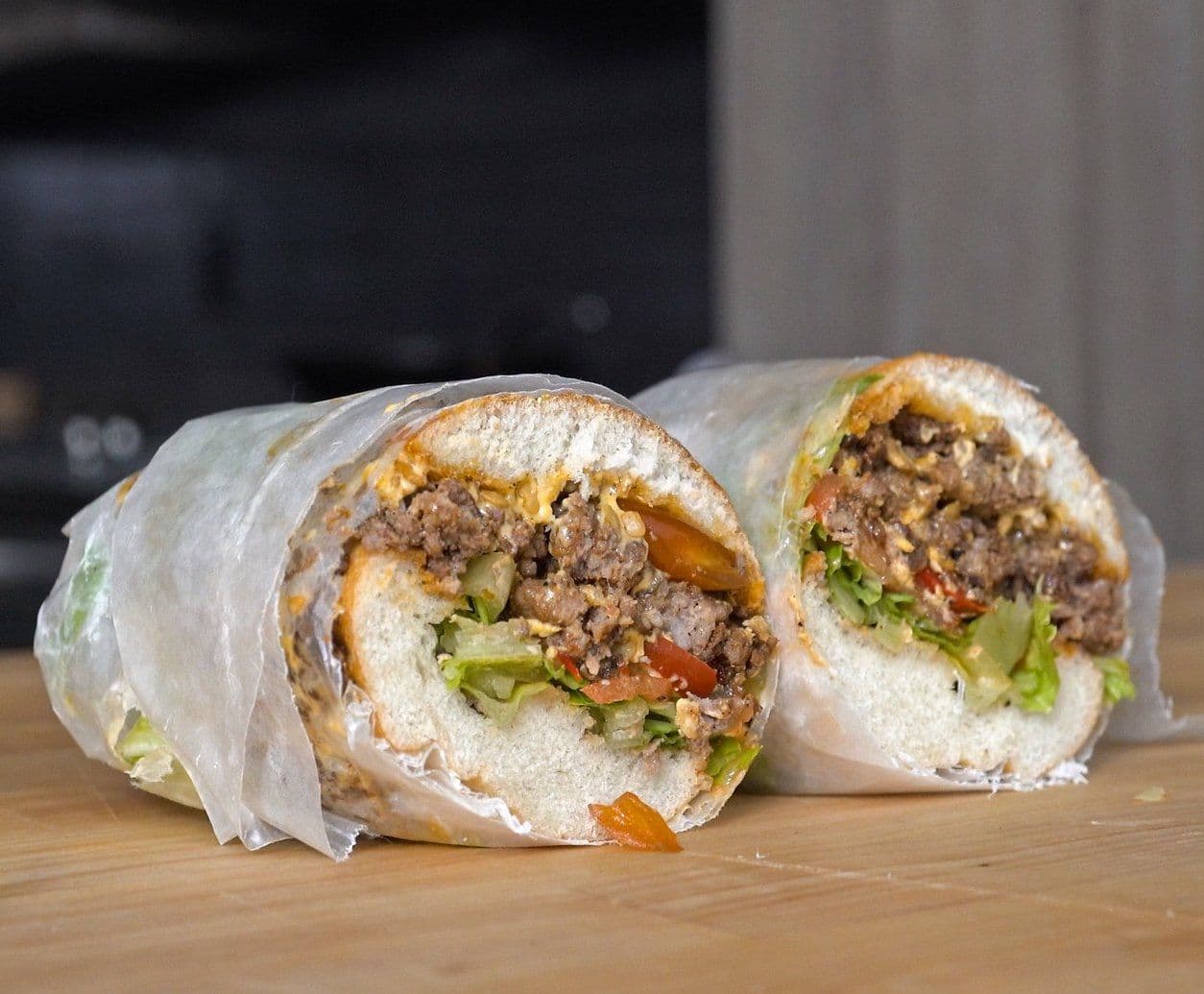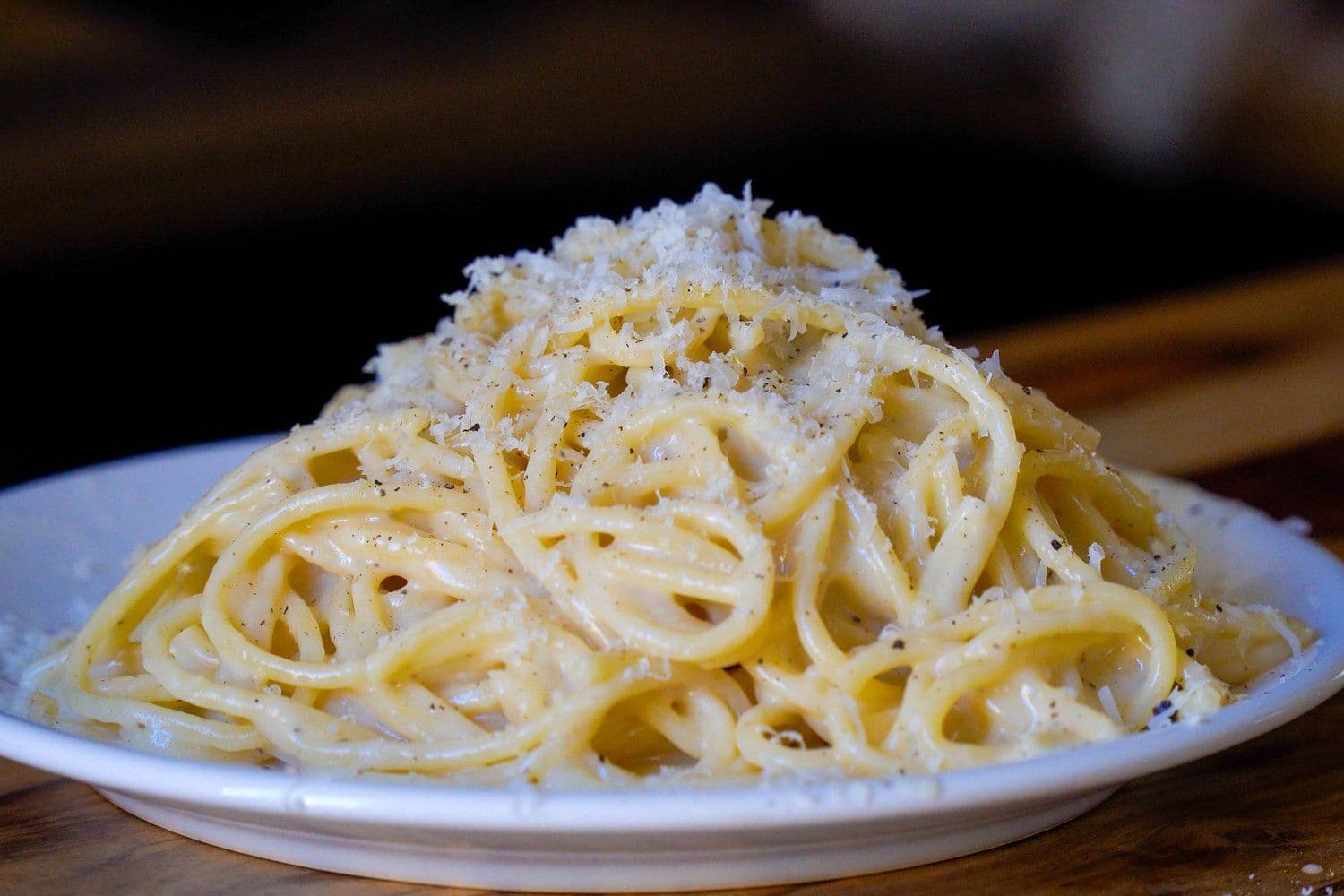Biang Biang Noodles
Hand-pulled noodles with hot oil-seared aromatics.
 By Ethan Chlebowski
By Ethan ChlebowskiTo make this dish, the noodles are stretched and then bounced on a surface. In Chinese, this sound is known as biang, hence the term biang biang noodles. The oil-seared preparation is a popular street food in Xi'an China, which was made well-known in the states by Xi'an Famous Foods.

Ethan Chlebowski
Ingredients
Noodles
- bread flour400 g2 parts
- water200 g1 part
- salt8 g1%
- neutral oil, or baking sprayto prevent sticking
Noodle sauce
- soy sauce60 g3 parts
- oyster sauce20 g1 part
- chinese black vinegar20 g1 part
- salt3 ga sprinkle
- fresh ginger, minceda small knob
Vegetables & aromatics
- napa cabbage, thinly sliceda handful
- neutral oil45 gthree spoonfuls
- scallions, thinly sliced1 stalk
- chinese chives, thinly sliced1-2
- chinese celery, diced1/2 stalk
- garlic, minced2-4 cloves
- szechuan peppercorns, grounda spoonful
- chinese red chili flakesa spoonful
Method
Step 1: Start the noodle dough (in advance)
Set a bowl over a scale. Add the flour, water, and salt. Mix the dough with your hands until a ball is formed. The dough will be fairly stiff and tough, so for about 5 minutes in the bowl. Cover the bowl with plastic wrap and let rest for 30 minutes.
Step 2: Finish the noodle dough (in advance)
The dough should feel much more elastic and supple after resting. Once rested, the dough for another 3 to 5 minutes, then rest for 5 more minutes.
Using a rolling pin and your hands, work the dough into a rectangle about 6" by 12" (15 cm by 30 cm). Cut the dough into six (100 g) pieces, making them each about 2" (5 cm) wide.
Brush the noodle pieces with a neutral oil. Add a drizzle to a container and stack noodles slightly overlapping like leaning books, not right on top of each other. Cover the container and let rest for at least 1 hour or in the fridge for up to 3 days.
Step 3: Prep the sauce & aromatics
While the dough rests, do some prep work.
In a bowl or container, mix together all noodle sauce ingredients until well combined. Cover and set aside.
Chop or gather any remaining vegetables or aromatics. Set aside.
Step 4: Pull the noodles
If your noodles have been resting in the fridge, pull them out to warm up on the counter for ~10 minutes.
When you are ready to finish the dish, you can proceed with pulling the noodles. Since this will take some time to do, bring a large pot of water to while you pull the noodles.
- Using a rolling pin, roll the dough piece about double the current width and 1 inch longer. Using a chopstick or back of a knife, gently imprint the center of the noodle to give it a 'perforated' ripping point.
- Grab the ends of the rectangle with your thumbs and forefingers and pull the dough gently, stretching until about shoulder length.
- Now the fun part. While still slightly pulling, bounce the noodle flat against the counter in an up and down motion until the dough is about 4 feet (1.25 m) long. This takes a little practice. Do not grip too tight or pull too quickly or the noodle will break. If it does, just pull the thick part where it broke.
- When the noodle is 4 ft, pick it up at the middle and rip it down the line. Pull until you reach the bottom, but don't pull all the way through, leaving you with a large noodle ring. Set aside and repeat the process.
It might be helpful to watch the video for the right hand-pulling technique.
Note: Pulling all six of the noodles at once will yield a lot of noodles: 2-4 healthy portions. Feel free to just pull 3 of the noodle sections, and only use half of the sauce/aromatics in the next steps. Then you could use the other half of the ingredients at a different time for a second fresh meal.
Step 5: Boil the noodles & blanch the cabbage
Once your noodles are pulled and your large pot is , you can cook the noodles.
Add the noodles to the boiling water and cook them until they float, which should take around 2 minutes. During the last 30 seconds of boiling, add the cabbage into the water with the noodles to cook through.
- If you are working with a smaller pot, it is ok to do this in batches.
Drain the noodles and cabbage and set aside into a large heatproof bowl for saucing.
Step 6: Sauce the noodles
Heat the oil in a small pot or skillet until it is hot but not yet smoking (~375°F/190°C).
To the bowl of cooked noodles and blanched cabbage, pour the sauce over top. Then add all remaining aromatics and spices in a pile on top of the noodles.
Drizzle the hot oil right on the aromatics, making sure everything sizzles and from its heat.
Toss the noodles until everything is evenly coated, taste and adjust the seasoning if needed, and serve right away while the noodles are still warm.
FAQ
Also Appears In
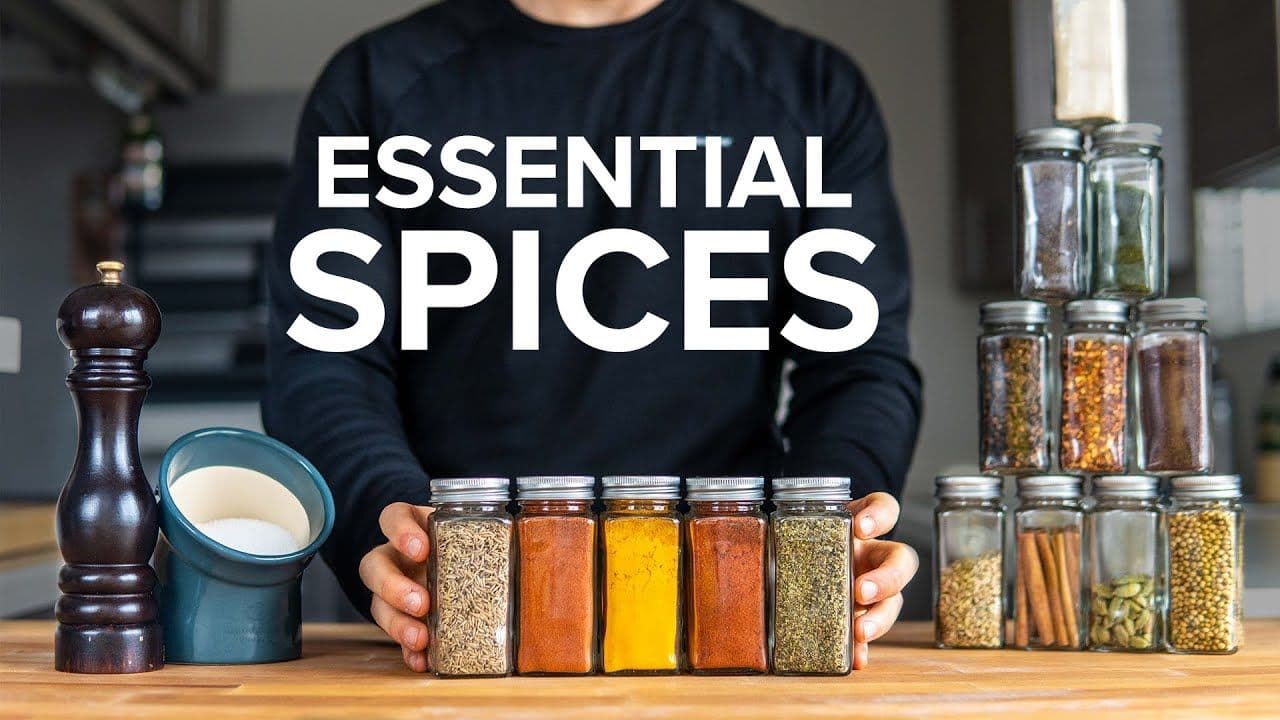
Free Spice Guide
Join The Mouthful Newsletter to receive our essential spices list pdf.
Just subscribe to our weekly newsletter where 60,000+ readers get lifestyle protocols, recipe frameworks, Q&A from expert home cooks, and cooking trends explained.
We hate spam too. Unsubscribe anytime.

